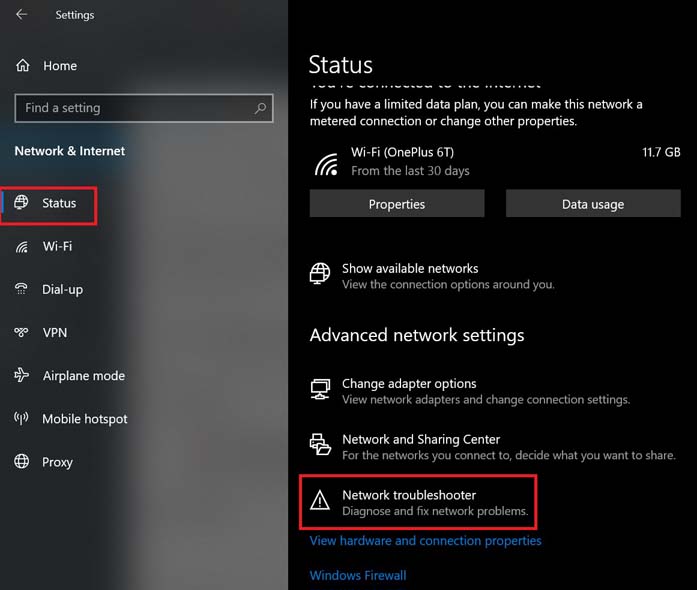Greetings, Windows User! Are you experiencing network troubles that leave you scratching your head? Don’t despair, for within this comprehensive guide, we’ll delve into the intricacies of running Windows Network Diagnostics, empowering you to troubleshoot and resolve even the most puzzling connectivity issues.
Windows Network Diagnostics is an invaluable tool that can pinpoint the root cause of your network woes. Whether it’s a faulty network adapter, an unstable internet connection, or a misconfigured firewall, this utility will guide you every step of the way towards a swift resolution.
Section 1: Understanding Network Diagnostics
What is Network Diagnostics?
Network Diagnostics is a built-in feature of Windows operating systems that provides a range of diagnostic tools for troubleshooting network connectivity issues. It allows you to quickly identify the source of the problem, whether it’s a hardware or software issue.
How to Launch Network Diagnostics
To access Network Diagnostics, simply type “Network Diagnostics” into the Windows search bar. Alternatively, you can follow these steps:
- Click on the Start button.
- Select Settings.
- Click on Network & Internet.
- Choose Status.
- Scroll down and click on Network troubleshooter.
Section 2: Performing Network Diagnostics
Troubleshooting Network Issues
Once Network Diagnostics is launched, it will automatically start troubleshooting your network connection. It will check for common problems such as:
- Network adapter issues
- Internet connectivity issues
- Firewall or security software conflicts
- DNS issues
Interpreting Results
Network Diagnostics provides detailed reports on the identified issues and potential solutions. If it finds any problems, it will offer step-by-step instructions on how to resolve them.

Source www.getdroidtips.com
Section 3: Advanced Troubleshooting
Using Advanced Options
In some cases, you may need to use advanced troubleshooting options to resolve more complex network issues. These options allow you to:
- Reset network adapters
- Flush DNS cache
- Reset TCP/IP stack
- Change network settings
Command-Line Diagnostics
If you’re comfortable with using the command line, you can also utilize the following commands for advanced network diagnostics:
ping– Checks the connectivity to a specified IP address or websiteipconfig– Displays network adapter and connection informationtracert– Traces the route taken by a packet to reach a destination
Section 4: Troubleshooting Specific Issues
Common Network Issues
Windows Network Diagnostics can assist in troubleshooting a wide range of network problems, including:
- No internet connection
- Slow internet speeds
- Connection drops
- DNS errors
- Firewall issues
Resolving Network Issues
The specific steps for resolving network issues will vary depending on the underlying cause. However, Network Diagnostics provides clear instructions on how to proceed.
Section 5: Troubleshooting Table
| Problem | Solution |
|---|---|
| No internet connection | Check network adapter, cables, and modem/router |
| Slow internet speeds | Optimize network settings, check for interference |
| Connection drops | Troubleshoot Wi-Fi signal strength, check router |
| DNS errors | Flush DNS cache, change DNS servers |
| Firewall issues | Disable firewall temporarily, add exceptions for necessary programs |
Conclusion
Windows Network Diagnostics is a powerful tool that empowers Windows users to troubleshoot and resolve network connectivity issues. By understanding its capabilities and utilizing the provided instructions, you can diagnose and fix a wide range of network problems. If you continue experiencing difficulties, consider checking out our other articles on network troubleshooting or seeking assistance from a qualified technician.
FAQ about Windows Network Diagnostics
1. What is Windows Network Diagnostics?
Windows Network Diagnostics is a built-in tool in Windows that helps you diagnose and resolve network problems.
2. How do I run Windows Network Diagnostics?
- Press Windows Key + R, type “msdt.exe -id NetworkDiagnostics” and press Enter.
- Alternatively, go to Settings > Network & Internet > Status and click on “Network troubleshooter”.
3. What types of network problems can Network Diagnostics help with?
Network Diagnostics can help with a wide range of network problems, including:
- Internet connectivity issues
- Slow network performance
- Network adapter problems
- DNS issues
- Proxy server issues
4. Will Network Diagnostics fix the network problems automatically?
Not always. Network Diagnostics will diagnose the problem and provide you with a step-by-step guide on how to fix it. You may need to follow the steps manually to resolve the issue.
5. What information does Network Diagnostics collect?
Network Diagnostics collects information about your network adapter, IP settings, DNS settings, and internet connection.
6. Is Network Diagnostics safe to use?
Yes, Network Diagnostics is a safe tool to use. It does not make any changes to your system settings without your permission.
7. What if Network Diagnostics can’t fix my problem?
If Network Diagnostics is unable to resolve your network issue, you can try the following:
- Restart your computer or network devices.
- Update your network drivers.
- Check for malware infections.
- Contact your internet service provider.
8. Can I run Network Diagnostics on older versions of Windows?
Network Diagnostics is available on Windows 10 and later versions.
9. Is there a command-line interface for Network Diagnostics?
Yes, you can run Network Diagnostics from the command line using the netsh command. For example:
netsh winsock reset
netsh int ip reset
10. Is there a third-party alternative to Network Diagnostics?
Yes, there are several third-party network diagnostic tools available, such as PingPlotter, Wireshark, and SolarWinds Network Performance Monitor.
